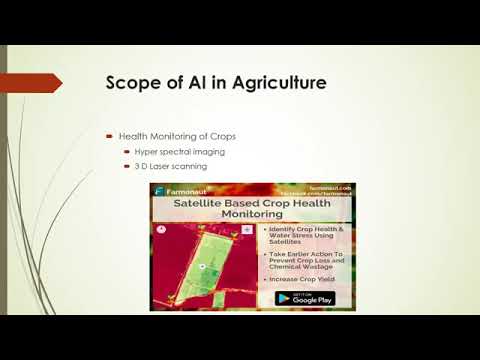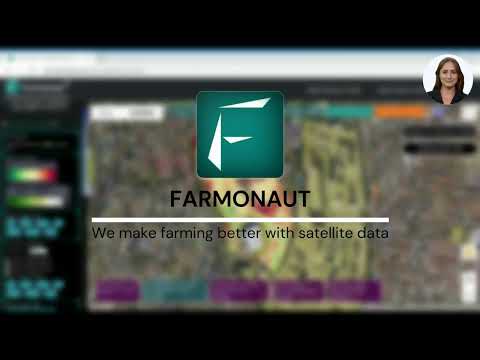Urgent: Kansas City Food Banks Face Crisis as USDA Cancels Critical Nutrition Assistance Shipments
“USDA cancellation impacts millions of pounds of food distribution, exacerbating hunger relief challenges in multiple counties.”
In a devastating blow to community hunger relief efforts, food banks across Kansas City and surrounding regions are grappling with an unprecedented crisis. The recent cancellation of crucial shipments by the U.S. Department of Agriculture (USDA) has sent shockwaves through our local food pantry services, threatening the very foundation of our nutrition program funding and food insecurity solutions. As we navigate this challenging landscape, we find ourselves at a critical juncture, where the need for emergency food assistance rivals the peak levels witnessed during the pandemic.
The Unfolding Crisis: A Closer Look
The sudden cancellation of USDA shipments has left Harvesters, our regional food bank serving 340,000 people across 27 counties in Missouri and Kansas, in a precarious position. Stephen Davis, CEO & President of Harvesters, expressed deep concern over the situation, highlighting the pivotal nature of the canceled products:
“The shipments that got canceled were really pivotal products for our neighbors. They included things like protein, eggs, produce. Those are things that are hard for us to get, and so it’s really difficult to replace those.”
This cancellation is not just a minor setback; it represents a significant blow to our food distribution networks and hunger prevention initiatives. The USDA’s Emergency Food Assistance Program (TEFAP) has been a cornerstone of federal nutrition assistance, providing millions of pounds of food to those in need. The abrupt halt of these shipments has created a gaping hole in our community food support system, one that we are struggling to fill.

The Impact on Our Community
The ripple effects of this cancellation are far-reaching and deeply concerning:
- Immediate Food Shortage: Harvesters estimates a loss of approximately 41,000 cases of food, translating to about 2.4 million pounds of vital nutrition.
- Nutritional Deficit: The cancellation primarily affects protein, eggs, and produce – essential components of a balanced diet that are challenging to source through alternative means.
- Increased Food Insecurity: With 1 in 8 people in our community already experiencing food insecurity, this setback threatens to push more families into crisis.
- Strain on Local Partners: Our network of local food pantries and agencies are experiencing heightened pressure as they struggle to meet the growing demand with diminished resources.
To fully grasp the severity of this situation, let’s examine the impact through a comparative lens:
| Metric | Before Cancellation | After Cancellation | Percentage Change |
|---|---|---|---|
| Monthly food distribution (in pounds) | 5,000,000 | 4,600,000 | -8% |
| Number of families served | 85,000 | 78,000 | -8.2% |
| Protein items available (in pounds) | 750,000 | 600,000 | -20% |
| Fresh produce available (in pounds) | 1,000,000 | 800,000 | -20% |
| Funding gap (in dollars) | $0 | $500,000 | N/A |
This table starkly illustrates the immediate and severe impact of the USDA shipment cancellation on our food bank operations and the communities we serve. The significant decrease in available protein and fresh produce is particularly alarming, as these are essential components of a nutritious diet and are often the most challenging items for food-insecure families to obtain.
The Broader Context: A National Crisis
While our focus is on the Kansas City area, it’s crucial to understand that this crisis extends far beyond our local boundaries. Food banks across the country are facing similar challenges, creating a national emergency in food security. The cancellation of USDA shipments is not an isolated incident but part of a larger pattern of reduced federal support for nutrition assistance programs.
This situation underscores the vulnerability of our food distribution networks and the critical role that federal nutrition assistance plays in maintaining food security for millions of Americans. As we grapple with this crisis, it’s becoming increasingly clear that we need to explore innovative solutions and strengthen our community food support systems to ensure no one goes hungry.
The Role of Technology in Addressing Food Insecurity
In these challenging times, we must explore every avenue to combat food insecurity. Technology, particularly in the agricultural sector, can play a crucial role in enhancing food production and distribution efficiency. Companies like Farmonaut are at the forefront of this technological revolution in agriculture.
Farmonaut’s satellite-based farm management solutions offer valuable tools for optimizing crop yields and reducing resource wastage. By providing real-time crop health monitoring and AI-based advisory systems, Farmonaut helps farmers make informed decisions that can lead to increased productivity. This increased efficiency in farming could potentially contribute to a more stable and abundant food supply, indirectly supporting food banks and hunger relief efforts.
For instance, Farmonaut’s carbon footprinting feature allows agribusinesses to monitor and reduce their environmental impact. This aligns with the growing need for sustainable farming practices, which are essential for long-term food security. By helping farmers produce more with less, such technologies could play a role in creating a more resilient food system that’s better equipped to handle crises like the one we’re currently facing.
“Food bank crisis in Kansas City rivals pandemic-era levels, affecting protein and produce availability for nutrition programs.”
Community Response and Call to Action
In the face of this crisis, our community has shown remarkable resilience and solidarity. However, the challenges ahead require a concerted effort from all sectors of society. Here’s how we can come together to address this urgent situation:
- Immediate Donations: We urgently need food and monetary donations to bridge the gap left by the USDA shipment cancellations. Every contribution, no matter how small, makes a difference.
- Volunteer Support: Our food banks and local pantries need volunteers more than ever. Your time and effort can help us maintain our distribution networks and reach those in need.
- Advocacy: We encourage everyone to reach out to their federal lawmakers and voice support for continued investment in nutrition programs. Your voice matters in shaping policy decisions that affect millions.
- Corporate Partnerships: We call on businesses to step up and support our hunger relief efforts through donations, employee volunteer programs, and other forms of assistance.
- Innovative Solutions: We’re open to exploring new partnerships and technologies that can help us streamline our operations and improve our food distribution efficiency.

Looking Ahead: Building a More Resilient Food System
While we focus on addressing the immediate crisis, we must also look to the future and work towards building a more resilient and sustainable food system. This includes:
- Diversifying Funding Sources: Reducing dependence on any single source of support, including federal programs, to create a more stable network of resources.
- Embracing Technology: Leveraging innovative solutions like those offered by Farmonaut to improve efficiency in food production and distribution. For instance, Farmonaut’s fleet management tools could potentially be adapted to optimize food bank logistics and delivery systems.
- Strengthening Local Food Networks: Fostering stronger connections between local farmers, food banks, and communities to create shorter, more resilient supply chains.
- Education and Outreach: Increasing public awareness about food insecurity and the importance of community support in addressing hunger.
- Policy Advocacy: Working towards long-term policy changes that address the root causes of food insecurity and strengthen nutrition assistance programs.
The Role of Technology in Enhancing Food Security
As we navigate this crisis, it’s crucial to explore how technological advancements can contribute to long-term solutions for food insecurity. While companies like Farmonaut primarily focus on agricultural optimization, their technologies have potential applications that could indirectly support food banks and hunger relief efforts:
- Improved Crop Yields: Farmonaut’s satellite-based crop health monitoring can help farmers optimize their yields, potentially leading to more abundant harvests and increased food availability.
- Resource Optimization: By providing insights on soil moisture and fertilizer needs, Farmonaut’s technology can help reduce resource wastage, making farming more efficient and potentially more cost-effective.
- Supply Chain Transparency: Farmonaut’s blockchain-based traceability solutions could be adapted to enhance transparency in food donation supply chains, ensuring that food reaches those in need efficiently and safely.
- Data-Driven Decision Making: The AI-powered insights provided by platforms like Farmonaut could be valuable for food banks in predicting demand and optimizing distribution strategies.
While these technologies are not direct solutions to the current crisis, they represent the kind of innovative thinking that could help build a more resilient food system in the long term.
Community Voices: Stories from the Front Lines
To truly understand the impact of this crisis, we must listen to the voices of those directly affected. Here are some stories from our community:
“I never thought I’d need to rely on a food bank, but after losing my job during the pandemic, it’s been a lifeline for my family. With these cuts, I’m worried about how we’ll manage.” – Sarah, mother of two
“As a volunteer at the local pantry, I’ve seen firsthand how the demand has skyrocketed. We’re doing our best, but with these shipment cancellations, it’s getting harder to meet everyone’s needs.” – John, food pantry volunteer
“Our school’s backpack program relies heavily on donations from the food bank. These cuts mean we might have to reduce the number of children we can help.” – Maria, school counselor
These stories highlight the human impact of the current crisis and underscore the urgent need for community-wide action and support.
FAQ: Understanding the Food Bank Crisis
To help our community better understand the current situation, we’ve compiled a list of frequently asked questions:
- Q: Why were the USDA shipments canceled?
A: The exact reason for the cancellation has not been provided. We are actively seeking clarification from federal authorities. - Q: How long is this shortage expected to last?
A: At this time, we don’t have a clear timeline. We are working on both short-term solutions and long-term strategies to address the shortage. - Q: Can’t food banks just buy the food they need?
A: While we do purchase food, our budgets are limited. The USDA program provided high-quality, nutritious food at a scale that’s difficult to match through purchases alone. - Q: How can I help?
A: You can help by donating food or funds, volunteering at local food banks, and advocating for continued support of nutrition assistance programs. - Q: Are all food banks affected by this?
A: The cancellation affects food banks across the country, but the impact may vary depending on each food bank’s reliance on USDA shipments.
Conclusion: A Call for Collective Action
The cancellation of USDA shipments has created a crisis in our food bank assistance programs, threatening the food security of thousands in our community. However, this challenge also presents an opportunity for us to come together, innovate, and build a stronger, more resilient food support system.
We call on everyone – individuals, businesses, policymakers, and innovators – to join us in this crucial fight against hunger. Whether it’s through donations, volunteering, advocacy, or developing new solutions, every action counts. Together, we can ensure that no one in our community goes hungry, regardless of the challenges we face.
As we move forward, let’s remember the words of Stephen Davis: “We have to move forward; our mission is too important to not keep moving forward.” With your support, we can overcome this crisis and emerge stronger, more united, and better equipped to tackle food insecurity in all its forms.
To learn more about how you can help or to access food assistance, please visit our website or contact your local food bank. Together, we can make a difference.
Take Action Now
Your support is crucial in helping us navigate this crisis. Here are some ways you can make a difference:
- Donate: Every dollar counts. Your financial contribution helps us purchase essential food items and maintain our operations.
- Volunteer: Lend your time and skills to help us sort, pack, and distribute food to those in need.
- Spread the Word: Share this information with your network to raise awareness about the current crisis and how people can help.
- Advocate: Contact your local representatives and express your support for continued funding of nutrition assistance programs.
Together, we can overcome this challenge and ensure that no one in our community goes hungry.
Earn With Farmonaut: Affiliate Program
Earn 20% recurring commission with Farmonaut’s affiliate program by sharing your promo code and helping farmers save 10%. Onboard 10 Elite farmers monthly to earn a minimum of $148,000 annually—start now and grow your income!
Stay informed, stay involved, and together, let’s build a hunger-free community.







